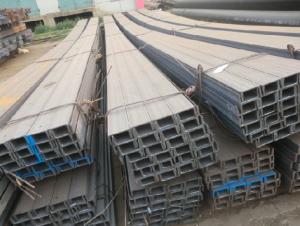When it comes to construction, there’s no denying the importance of rebar. It’s the backbone of many structures, providing strength and stability. But with so many options available, choosing the right rebar diameter can be a daunting task. That’s why we’re here to guide you through the process, making it as easy as pie. So, let’s dive in and explore the world of rebar diameters.
Why Rebar Matters
Rebar, short for reinforcing bar, is made from steel and is used to reinforce concrete structures. It’s designed to resist tension, which is a common issue in concrete construction. Without rebar, concrete would be more susceptible to cracking and breaking under stress. So, it’s clear that rebar plays a crucial role in the structural integrity of buildings and other structures.
The Role of Rebar Diameter
The diameter of rebar is a key factor in determining its strength and suitability for a particular project. Thicker rebar can handle more weight and stress, making it ideal for larger structures or areas that require extra support. On the other hand, thinner rebar is more flexible and easier to work with, which can be beneficial for smaller projects or intricate designs.
Common Rebar Diameters
There are several common rebar diameters used in construction, each with its own set of applications. Here are a few you might come across:
– 3 Rebar: This is the smallest diameter typically used, measuring 3/8 inches. It’s often used for residential construction and smaller projects.
– 4 Rebar: With a diameter of 1/2 inch, this is a popular choice for a variety of applications, including commercial and residential construction.
– 5 Rebar: Our focus for today, the 5 rebar has a diameter of 3/4 inches and is commonly used for larger projects or areas that require more support.
– 6 Rebar: At 1 inch in diameter, this is a heavy-duty option suitable for large-scale construction projects.
Factors to Consider When Choosing Rebar Diameter
Choosing the right rebar diameter involves more than just picking the thickest option available. Here are some factors to consider:
– Project Size and Scope: Larger projects will require thicker rebar to handle the increased load and stress.
– Design Requirements: Some designs may call for specific rebar diameters to meet certain aesthetic or structural needs.
– Cost: Thicker rebar is generally more expensive, so budget constraints can play a role in your decision.
– Availability: Depending on your location, certain rebar diameters may be more readily available than others.
The Importance of Proper Installation
Once you’ve chosen the right rebar diameter, it’s crucial to ensure it’s installed correctly. Proper installation involves:
– Proper Placement: Rebar should be placed according to the project’s design specifications to ensure maximum structural support.
– Correct Spacing: Rebar should be spaced evenly to distribute the load and prevent concrete from cracking.
– Securing: Rebar must be secured in place to prevent movement during the concrete pouring process.
The Future of Rebar
As construction technology advances, so too does the use of rebar. Innovations in material science and construction techniques are leading to new types of rebar that are stronger, more flexible, and more durable. Keep an eye on these developments to stay ahead of the curve in your construction projects.
Wrapping Up
Choosing the right rebar diameter is an essential part of any construction project. By considering the project’s size, design requirements, cost, and availability, you can select the perfect rebar for the job. And remember, proper installation is just as important as choosing the right diameter. With this guide, you’ll be well on your way to reinforcing your structures like a pro.
So, there you have it. Rebar isn’t just a bunch of metal bars; it’s the unsung hero of the construction world. By understanding the importance of rebar diameter and how to choose and install it properly, you’re setting yourself up for success in your construction endeavors. Happy building!

